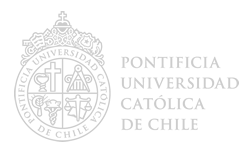Comparison of the total phenolic content, total anthocyanin content and antioxidant activity of polyphenol-rich fruits grown in Chile
Abstract
In the last 10 years, interest in research on polyphenol-rich fruit species has increased due to the potential health benefits of these species, mainly attributed to their high anthocyanin content and antioxidant activity. Six polyphenol-rich fruit species (blueberries, raspberries, blackberries, strawberries, pomegranates and maqui berries) were harvested at the same maturity stage during the same growing season and were compared according to their total phenolic (Folin-Ciocalteu method) and total anthocyanin (pH differential method) contents and antioxidant activity using ferric-reducing antioxidant power (FRAP assay) and 2,2-diphenylpicrylhydrazyl (DPPH) radical scavenging capacity methods. With the results of this study, the polyphenolic status of the main polyphenol-rich fruit species that are grown in Chile were compared, and maqui berry showed the highest total phenolic (14.6 g gallic acid equivalent kg-1 of fresh weight [g GAE kg-1 FW]), total anthocyanin (9.3 g cyanidin-3-glu kg-1 of fresh weight [g cy-3-glu kg-1 FW]) contents, and antioxidant activity (152.0 mmol Fe2+ kg-1 of fresh weight [mmol Fe2+ kg-1 FW] and 1.5 mg of fresh weight [FW]) with significant differences from the other fruit species that were analyzed. Nevertheless, bioavailability studies to test the benefits of the species’ dietary antioxidants should be performed in order to establish scientific evidence in this area.
Durante los últimos 10 años, el interés en la investigación de los frutos ricos en polifenoles ha incrementado debido a sus potenciales efectos beneficiosos para la salud atribuidos principalmente a contenidos altos de antocianinas y una alta actividad antioxidante. Seis especies de frutos ricos en polifenoles (arándanos, frambuesas, moras, frutillas, granadas y maquis) fueron cosechados en el mismo estado de madurez durante la misma temporada de producción y comparadas de acuerdo a sus contenidos de fenoles totales (método Folin Ciocalteu), antocianinas totales (método pH diferencial) y actividad antioxidante determinada por los métodos de FRAP (poder antioxidante para reducir el hierro férrico) y del radical DPPH (2,2-diphenylpicrylhydrazil). Los resultados de este estudio permiten comparar el estatus polifenólico de los principales frutos ricos en polifenoles que crecen en Chile, donde el maqui presenta el mayor contenido de fenoles totales (14,6 g EAG kg-1 pf), antocianinas totales (9,3 g ci-3-glu kg-1 pf), y actividad antioxidante (152,0 mmol E Fe+2 kg-1 and 1,5 mg pf) con diferencias significativas con las otras especies de frutos analizadas. Sin embargo, se deben realizar estudios de biodisponibilidad para probar los efectos benéficos sobre la salud humana de los antioxidantes de esta especie para poder establecer evidencia científica en esta área.

